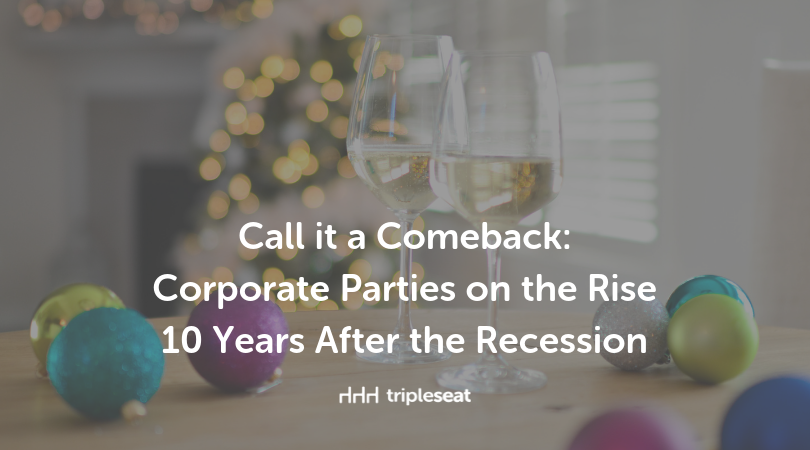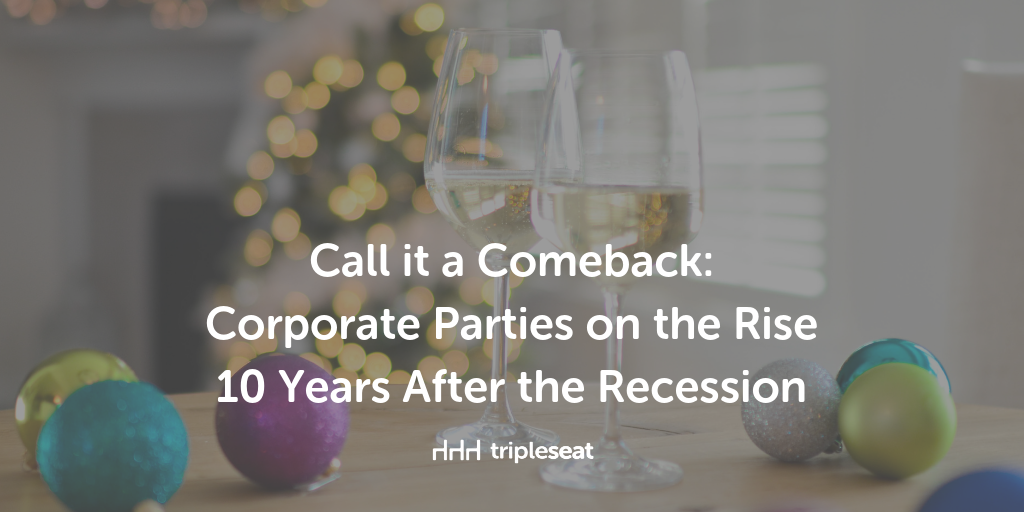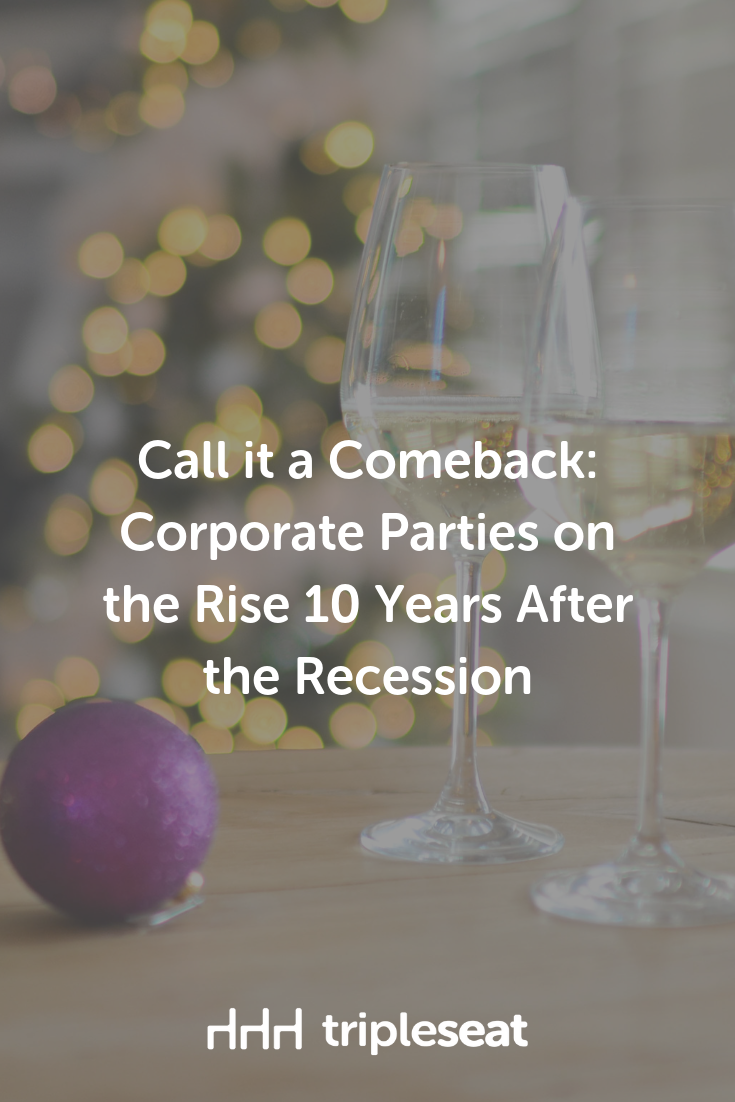Call it a Comeback: Corporate Parties on the Rise 10 Years After the Recession

The holiday season is the busiest time of the year for restaurants and their corporate clients, who each year are challenged to fit in everything they need to do in a roughly five-week period between Thanksgiving and Christmas.
With such a tight window how do they make it work?
For the events industry, the answer is simple: bend the rules and extend the calendar. We took a closer look at our customer data to discover the busiest events days of the season found that our restaurant customers’ schedules are packed throughout November and December. However, the top five dates for holiday bookings stretch all the way into the beginning of 2019.
Most booked dates during the holidays:
- Sunday, Jan. 6
- Saturday, Jan. 5
- Monday, Jan. 7
- Sunday, Dec. 30
- Monday, Dec. 31
There’s more events, more dates, and more revenue for event venues. It looks like holiday parties are making a comeback.
Here’s what corporate parties were like in the early 2000s, where thousands of employees and their spouses would gather for lavish, four-day events. Companies spent endless dollars on these shindigs until the financial crisis of 2007-2008 put a stop to all of the celebrating. Budgets were being slashed in Samurai-like fashion, and corporate holiday parties came to an abrupt halt.
Ten years later, corporate parties are back in a big way.
Data tells the story
People are booking events much earlier and much faster. Our customers see a spike in holiday bookings as early as October 30. And resources like searchable venue listings that include photos and information about private dining rooms and menus help to speed up the venue selection process.
Occupancy and revenue have increased for holiday parties. Back in 2008, venues reported a 40 percent occupancy. Ten years later, it’s back up to almost 90 percent. And of course, more occupancy means more profit: the average revenue was $2,000 per event in 2008 and in 2018 it’s almost doubled to around $4,000 per event.
What’s driving the increase?
First, the economy has rebounded in a big way in the 10 years since the financial meltdown. Also, companies are being smarter about their holiday party planning and expenses.
They’re holding smaller parties than the 1,000-person gatherings of the early 2000s. Instead of one company-wide extravaganza, companies have doubled-down on smaller, more focused gatherings. They’re planning holiday parties for individual departments, which is a plus for restaurants. And smaller parties mean multiple event bookings.
Another trend is that companies have thrown the old-school holiday party playbook out the window. Their employees don’t care for an all-day meeting listening to someone talk, followed by a night of open bars and uncomfortable alcohol-fueled antics. Employees are looking for quality. They want experiences like food or cocktail tastings, casino nights, photo booths, entertainment, and having their party in a unique venue.
Takeaways
30 percent of parties are held at a restaurant location, so restaurants set the template for anyone planning a corporate party — this holiday season, or at any point in 2019. Take a lesson from the modern version of corporate events. Look for unique venues that include activities to create a memorable experience for your employees. Keep costs down by entrusting departments to have their own smaller celebrations. And be flexible. Work with the venue’s event staff to find a menu, setup, amenities, dates that work for your vision and your budget.


